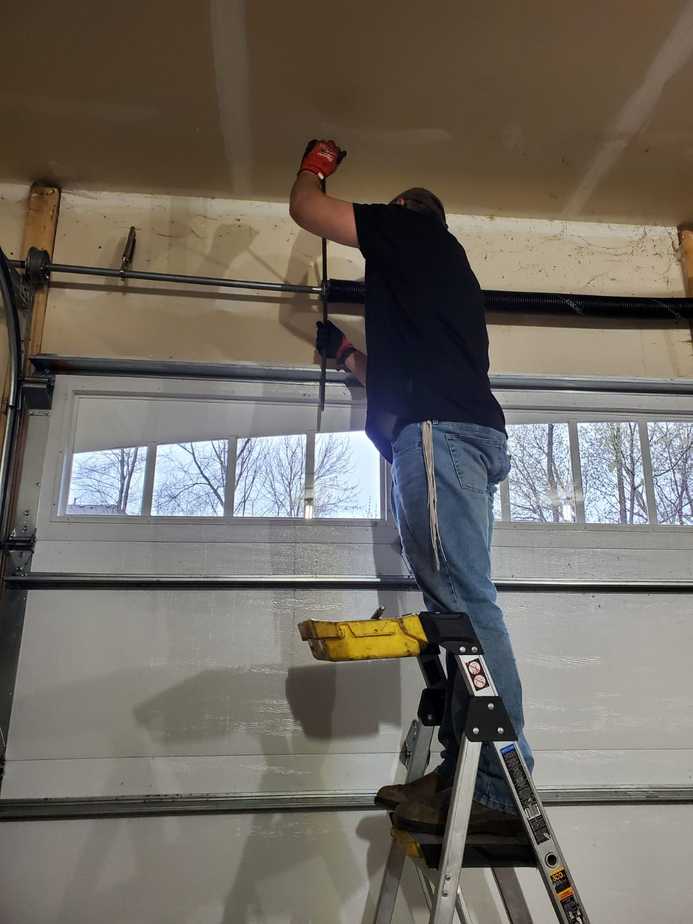Garage Door Repair Parker CO involves several steps, including installing the opener unit, connecting it to the garage door, and configuring any remote controls or keypads.

Here is a comprehensive guide to help you through the process of connecting your garage door opener:
Step 1: Gather Necessary Tools and Materials
Before starting, ensure you have all the necessary tools and materials:
- Garage door opener kit (including motor unit, rail, trolley, chain/belt, and mounting hardware)
- Ladder
- Screwdriver
- Drill with bits
- Wrenches
- Measuring tape
- Pliers
- Level
- Stepladder
- Pencil or marker
- Safety glasses and gloves
Step 2: Prepare the Garage Door
- Inspect the Door:
- Make sure the garage door is in good condition and operates smoothly. Fix any issues before installing the opener.
- Disengage the Door:
- Pull the emergency release cord to disengage the garage door from the opener rail. This allows the door to be manually operated.
Step 3: Install the Garage Door Opener
- Assemble the Rail:
- Assemble the rail according to the manufacturer’s instructions. This usually involves connecting several sections together and securing them with screws or bolts.
- Attach the Trolley:
- Slide the trolley onto the rail. The trolley is the mechanism that moves along the rail to open and close the door.
- Mount the Rail to the Motor Unit:
- Attach one end of the rail to the motor unit. Secure it with the provided fasteners.
- Secure the Rail to the Header Bracket:
- Attach the header bracket to the wall above the garage door. The height should be specified in the instructions. Secure the bracket firmly with screws.
- Mount the Rail:
- Attach the other end of the rail to the header bracket using the provided pin and fasteners. Ensure the rail is level.
Step 4: Mount the Motor Unit
- Position the Motor Unit:
- Lift the motor unit and position it near the ceiling, ensuring it is aligned with the rail.
- Install the Ceiling Bracket:
- Attach the ceiling bracket to the ceiling joists. Use a stud finder to locate the joists for secure mounting.
- Secure the Motor Unit:
- Attach the motor unit to the ceiling bracket using the provided bolts and hardware. Ensure it is securely mounted and level.
Step 5: Attach the Door Arm
- Connect the Door Bracket:
- Attach the door bracket to the garage door. It should be centered and securely fastened.
- Attach the Door Arm to the Trolley:
- Connect the straight and curved door arms together and then attach them to the trolley. Secure the connection with the provided bolts and pins.
- Connect the Door Arm to the Door Bracket:
- Attach the other end of the door arm to the door bracket. Ensure it is securely fastened.
Step 6: Install Safety Sensors
- Mount the Sensors:
- Attach the safety sensors to the garage door tracks on either side, about 6 inches above the ground. Use the provided brackets for mounting.
- Align the Sensors:
- Ensure the sensors are facing each other and are perfectly aligned. When properly aligned, the indicator lights on the sensors should light up.
- Run the Wires:
- Run the sensor wires along the garage wall and ceiling to the motor unit. Secure the wires with staples or wire clips to prevent them from getting tangled or damaged.
Step 7: Connect the Power
- Plug in the Opener:
- Plug the garage door opener into a nearby electrical outlet. Ensure the outlet is properly grounded.
- Install Backup Battery (if applicable):
- If your opener has a backup battery, install it according to the manufacturer’s instructions.
Step 8: Program the Remote Controls and Keypad
- Program the Remotes:
- Follow the manufacturer’s instructions to program the remote controls. This typically involves pressing a button on the motor unit and then pressing a button on the remote.
- Set Up the Keypad:
- If your opener includes a keypad, follow the instructions to set it up. This usually involves entering a code and programming it to work with the opener.
Step 9: Test the Opener
- Test the Door:
- Press the remote or wall control button to test the opener. Ensure the door opens and closes smoothly without any obstructions.
- Adjust the Force and Travel Limits:
- Adjust the force and travel limits according to the manufacturer’s instructions to ensure the door operates safely and correctly.
- Test the Safety Sensors:
- Place an object in the path of the safety sensors to ensure the door reverses when obstructed.
Step 10: Final Adjustments and Maintenance
- Lubricate Moving Parts:
- Lubricate the moving parts of the garage door, including the hinges, rollers, and tracks, to ensure smooth operation.
- Secure All Hardware:
- Check and tighten all bolts and screws to ensure everything is securely fastened.
- Review Safety Features:
- Familiarize yourself with the safety features of your garage door opener and ensure they are functioning correctly.
By following these steps, you can successfully connect and install your garage door opener. Always refer to the specific instructions provided by the manufacturer, as details may vary between different models and brands. Proper installation and maintenance will ensure reliable and safe operation of your garage door opener.
Martin Garage Door
10411 S Parker Rd, Parker, CO 80134, United States
1-303-663-1310

